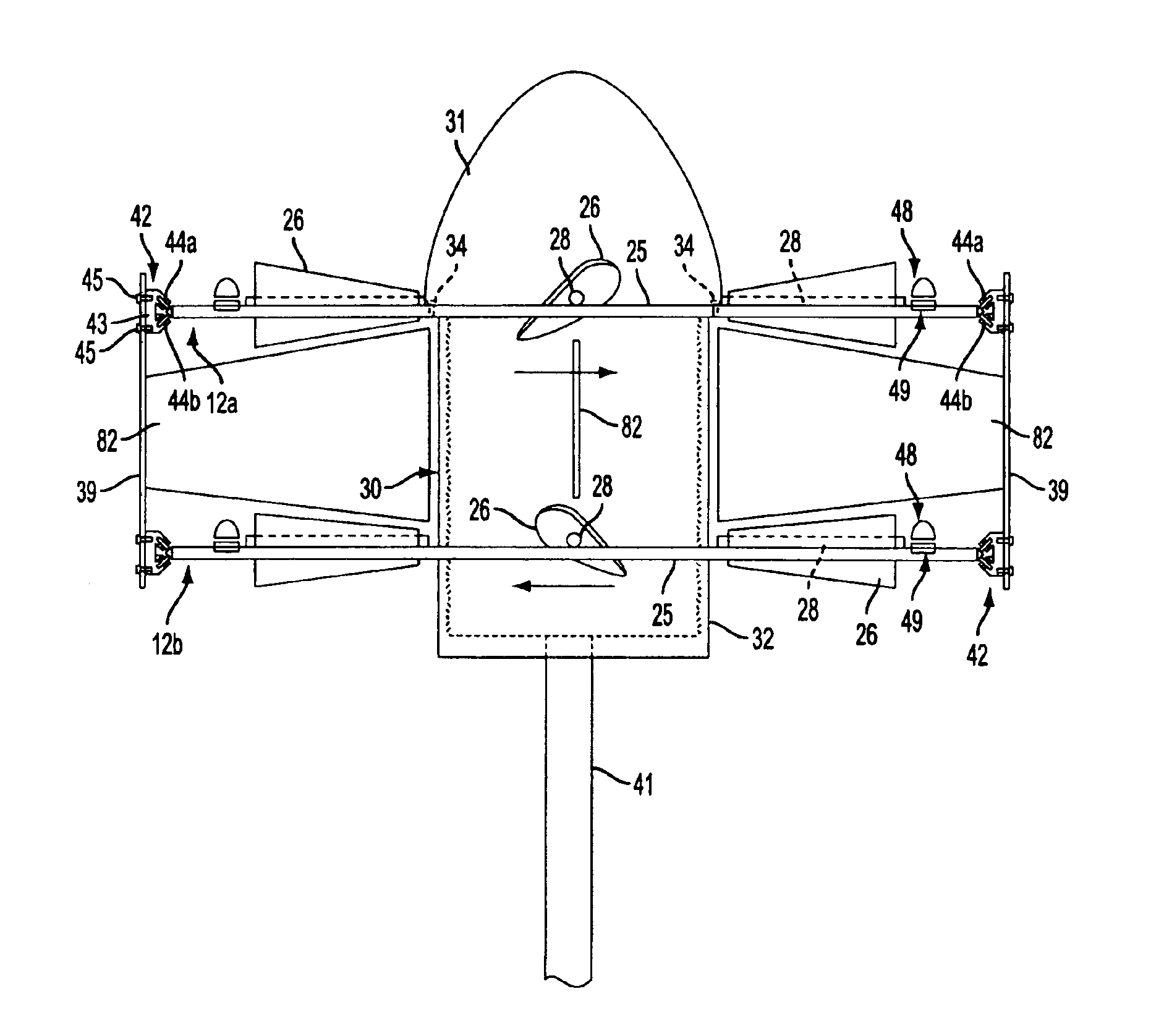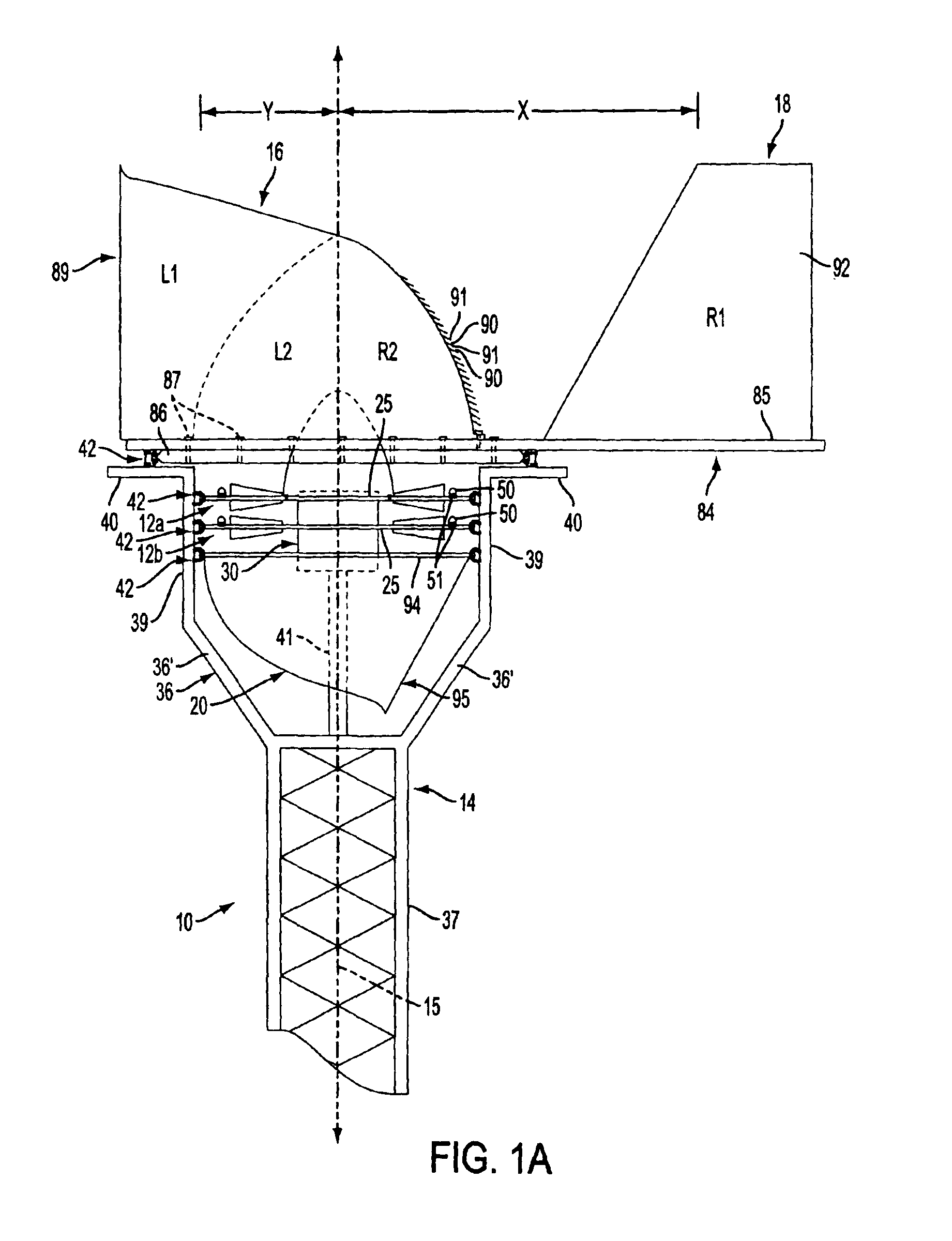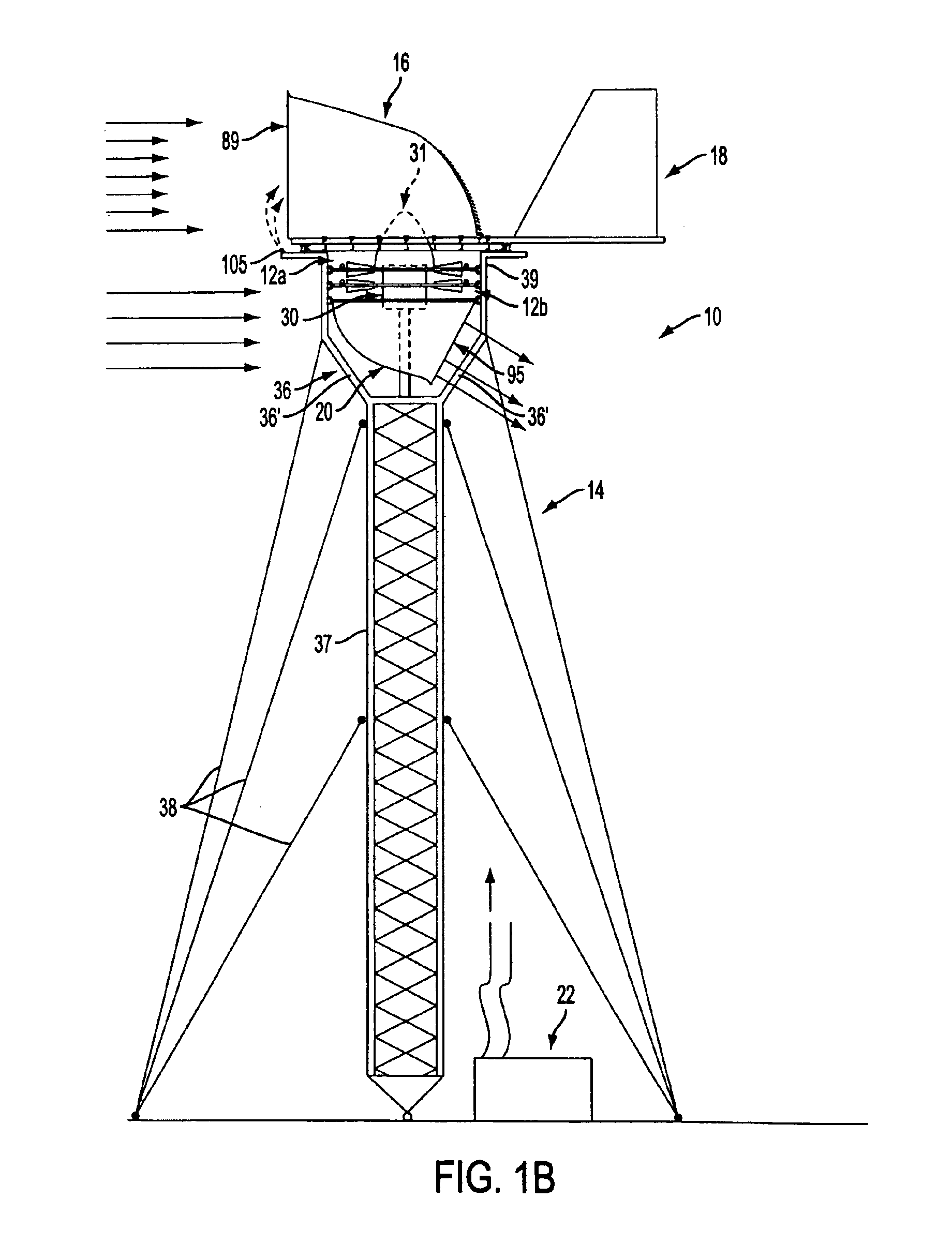Wind energy conversion system
a conversion system and wind energy technology, applied in the direction of wind energy generation, wind motors with parallel air flow, wind power systems with perpendicular air flow, etc., can solve the problems of limiting the cost-effectiveness and acceptance of wind power systems as viable options, wind power systems of excessive weight and cost, and wind power systems of over 33 tons. , to achieve the effect of reducing or increasing the size of the air gap, and increasing the drag for
- Summary
- Abstract
- Description
- Claims
- Application Information
AI Technical Summary
Benefits of technology
Problems solved by technology
Method used
Image
Examples
Embodiment Construction
[0058]A wind energy conversion system or wind power system 10 according to the present invention is illustrated in FIGS. 1A and 1B and comprises upper and lower wind turbines 12a and 12b forming an electrical generator, a tower 14 supporting the wind turbines 12a and 12b at an elevated position above the ground for rotation about a vertical rotation axis 15, an air intake hood or snorkel 16 disposed over the upper wind turbine 12a for directing intake air to the wind turbines, a rudder assembly 18 for positioning the hood 16, and an exhaust plenum 20 disposed beneath the lower wind turbine 12b for exhausting air from the wind turbines. Although the wind energy conversion system 10 is shown as comprising upper and lower wind turbines 12a and 12b, it should be appreciated that the wind energy conversion system may comprise a single wind turbine, such as wind turbine 12a or 12b, forming the electrical generator as disclosed in prior provisional patent application Ser. No. 60 / 448,355 fi...
PUM
 Login to View More
Login to View More Abstract
Description
Claims
Application Information
 Login to View More
Login to View More - R&D
- Intellectual Property
- Life Sciences
- Materials
- Tech Scout
- Unparalleled Data Quality
- Higher Quality Content
- 60% Fewer Hallucinations
Browse by: Latest US Patents, China's latest patents, Technical Efficacy Thesaurus, Application Domain, Technology Topic, Popular Technical Reports.
© 2025 PatSnap. All rights reserved.Legal|Privacy policy|Modern Slavery Act Transparency Statement|Sitemap|About US| Contact US: help@patsnap.com



